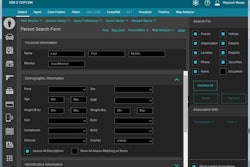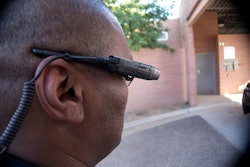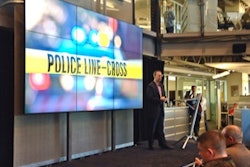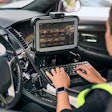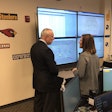When I started my career in law enforcement nearly 35 years ago, the only "technology" we needed was the police radio and the location of the nearest pay phone. Today police radios scan 30 channels and officers typically have in-car video cameras, traffic monitoring radar units, in-car computer data terminals with Internet access, body cameras, a department-issued cellphones and, of course, personal cellphones. With all this technology in the cruisers it’s a wonder we don't have more officer-involved crashes than we do.
Advances in technology have been a mixed blessing for contemporary law enforcement agencies. Take the explosive spread of Internet access over the last two decades, for example. On one hand, everyday technologies like social media and other applications are a boon to law enforcement but they have also made it possible for gangs and even terrorist organizations to coordinate like never before, creating an entirely new digital space that needs policing.
Social media is far from the only technology that’s drawn concern from police. Many in the law enforcement community have particularly cited a mobile app called Waze, a traffic-tracking tool that displays the current location of police officers, as potentially allowing those with criminal intent to avoid or seek out and harm law enforcement personnel.
While this certainly complicates the work of keeping the public safe, criminals using the Internet, whatever they use it for, often leave a trail behind. With the proper knowledge and tools on their side, law enforcement technicians can use this expansive channel of communication against potential or suspected criminal offenders. The Internet has become a broad web of shared personal information that remains permissible as evidence when attained legally, creating an organic database of recorded behaviors that can provide unique insight into each case. When analyzed, this data can even be useful in identifying criminal patterns and anticipating threats.
Police are being tasked with increasingly complicated challenges as the state of technology evolves, but today’s most effective agencies aren’t exactly lacking in technical muscle. The same rapid expansion of technology forcing quick adaptation on the part of police has set the stage for exciting, innovative tools that help officers serve their communities.
Law enforcement agencies around the country have recognized the value of these tools, using them to meet the shifting demands of police work. Some are still relatively untested, others are controversial, but each new armament in the fight against crime has the potential to radically alter the way law enforcement operates.
3D Crime Scene Imaging
The methods that analysts use to dissect every facet of a crime scene have fascinated the public in recent years, which is understandable with how far the field has come. 3D scanning technology, like some of the solutions offered by Faro, certainly seems like something straight out of science fiction. These devices take a three-dimensional scan of an entire crime scene, replacing many sketches and photographs..
Through-the-Wall Radar
The emergence of new radar technology that uses radio waves to detect movement through walls caused quite a stir when it was brought to public attention several months ago. The controversy is understandable, as concern over privacy rights continues to rise, and the technology does pose some difficult questions relative to the Fourth Amendment. However, this technology isn’t actually new, and has been used by nearly 50 law enforcement agencies in the U.S. to mitigate the dangers of entering buildings that house criminal activity. Using the L-3 CyTerra Range-R, which is sensitive enough to measure even the slightest movement, officers can gain a complete picture of what threats they’ll face, which is critical information to the success and safety of a breach.
Body-Worn Cameras
The national call for officers to wear cameras has been heard loud and clear by many police agencies. Recently, the city of Detroit announced that all police officers would soon be outfitted with body cameras, and numerous others agencies have done the same. These cameras, which are now small enough to be mounted on an officer’s uniform or on a pair of glasses do far more than just promote public trust and accountability in the age of viral videos and demands for transparency. Though some members of the law enforcement community have raised concerns over the use of the cameras, they can actually provide a helpful resource to police departments and protect officers from an increasing abundance of false claims of inappropriate behavior or abuse.
Every second of video that an officer’s camera records can be taken into evidence, providing a first-hand account of what took place during any interaction with a subject. The cameras provide the officer’s perspective on the incident unfettered by testimony and witness reports. Beyond that, departments can use the footage to train and practice crisis scenarios, reviewing successful arrests and discovering areas for improvement. Community members and law enforcement officers alike can benefit from police cameras seeing more frequent use.
Predictive Analytics
Criminal elements may have gained a powerful tool in the Internet, but so have law enforcement agencies, with more data available than ever before. Using software dedicated to providing insight into criminal patterns and all legally warranted personal information, analysts are able to recognize connections between various activities and cases, even potentially predict where the next threat will emerge. These systems draw from a number of databases simultaneously, which helps law enforcement analyze information coming from mobile telephone service providers, banks, credit card companies, and many other public forms of data. Once all of the relevant information is gathered, new tools like these allow agencies to share their findings with others around the nation.
Patrick J. Solar, Ph.D. has been a police officer for nearly 30 years serving as a street officer, detective, sergeant, lieutenant, and chief. He is currently an assistant professor of criminal justice at the University of Wisconsin-Platteville.




